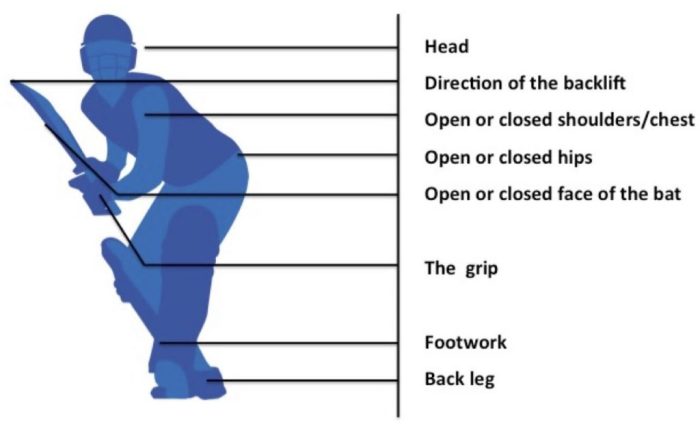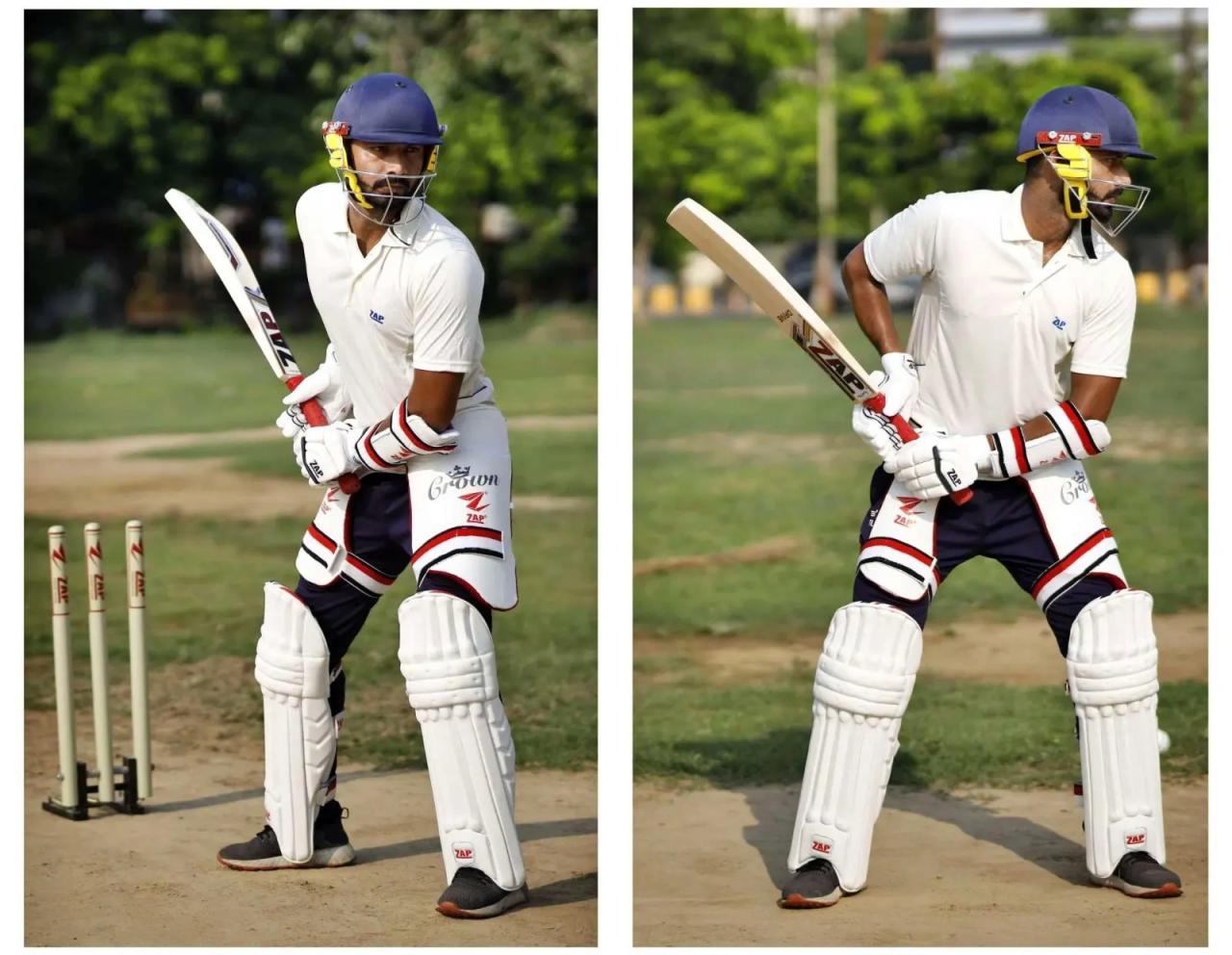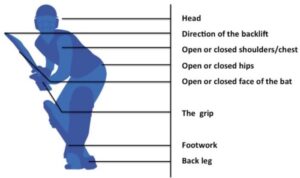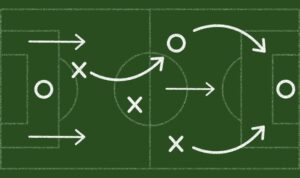Cricket batting techniques sets the stage for this enthralling narrative, offering readers a glimpse into a story that is rich in detail with american high school hip style and brimming with originality from the outset.
If you want to dominate the game of cricket, understanding the ins and outs of batting techniques is crucial. From the basic stance to shot selection, every aspect plays a key role in scoring those winning runs.
Overview of Cricket Batting Techniques
Cricket batting techniques have a rich history that dates back to the origins of the sport in England. In the early days, players used basic techniques to hit the ball, focusing more on defense rather than aggressive shots. As the sport evolved, so did the batting techniques, with players developing a wide range of strokes and shots to outsmart the bowlers.
Mastering different batting techniques in cricket is crucial for any player looking to succeed in the game. From defensive shots like the forward defense to attacking shots like the cover drive, each technique has its own unique purpose and requires precision and skill to execute effectively. Being able to adapt and switch between techniques based on the game situation is key to becoming a successful batsman.
Over time, batting techniques in cricket have continued to evolve, with players constantly innovating and coming up with new shots to stay ahead of the game. The introduction of limited-overs cricket and T20 formats has further pushed players to develop more aggressive and unorthodox techniques to score runs quickly and efficiently. As a result, modern-day batsmen are equipped with a wide array of shots to tackle any bowling attack they face on the field.
Basic Batting Stance and Grip

To excel in cricket batting, it is crucial for a player to have the correct stance and grip while facing the bowler. The stance and grip directly impact the player’s ability to make solid contact with the ball and control the direction of the shot.
When it comes to the batting stance, a player should stand with their feet shoulder-width apart and knees slightly bent. The weight should be evenly distributed on both feet, with the body leaning slightly forward towards the bowler. The head should be level and eyes focused on the bowler’s hand to pick up the line and length of the delivery.
Proper Grip of the Bat
The grip of the bat is another crucial aspect of batting technique. There are primarily two types of grips used by cricket players – the neutral grip and the V grip.
– The neutral grip involves holding the bat with both hands close together on the handle, ensuring that the V formed by the thumbs and forefingers is pointing towards the shoulder of the non-dominant hand. This grip provides better control and maneuverability of the bat.
– The V grip, on the other hand, involves having a more pronounced angle between the thumbs and forefingers, forming a V that points towards the shoulder of the dominant hand. This grip is preferred by players looking to generate more power in their shots.
It is essential for a player to experiment with both grips and find the one that feels most comfortable and allows for optimal performance at the crease. The grip should be firm but not too tight, allowing for flexibility and quick adjustments while facing different types of deliveries.
Remember, a correct batting stance and grip set the foundation for a player’s batting technique and play a significant role in their overall performance on the field.
Footwork and Body Positioning: Cricket Batting Techniques
When it comes to cricket batting, having proper footwork and body positioning is crucial for executing shots effectively and efficiently. These aspects play a significant role in determining the quality of a batsman’s performance at the crease.
Importance of Footwork
Proper footwork is essential in cricket batting as it allows the batsman to adjust their position according to the line and length of the delivery. Good footwork enables the batsman to get into the right position to play the shot with balance and control. It helps in maintaining stability and generating power while playing the shot.
- Ensure to move your feet towards the line of the ball to get in the best position.
- Practice drills to improve agility and quick movements while batting.
- Focus on transferring your weight onto the front foot or back foot depending on the type of shot.
Impact of Body Positioning
Body positioning plays a vital role in determining the effectiveness of a shot. The body should be aligned correctly with the intended direction of the shot to ensure a clean connection with the ball. Incorrect body positioning can lead to mistimed shots or missing the ball altogether.
Proper alignment of the shoulders and hips is crucial for maintaining balance and control during the shot.
- Keep your head still and eyes level to maintain focus on the ball.
- Ensure your body weight is evenly distributed to maintain stability and control.
- Practice drills to work on body positioning and alignment while playing different types of shots.
Shot Selection and Execution
When it comes to cricket, shot selection and execution play a crucial role in a batsman’s performance. The ability to choose the right shot for the situation and then execute it effectively can make a huge difference in the outcome of the game.
Types of Cricket Shots
- Straight Drive: A classic shot played with a straight bat down the ground.
- Cover Drive: A graceful shot played through the off-side, usually towards the cover region.
- Square Cut: A powerful shot played square of the wicket on the off-side.
- Hook Shot: A shot played to a short-pitched delivery towards the leg side.
- Reverse Sweep: A unique shot where the batsman switches hands and sweeps the ball towards the off-side.
Factors Influencing Shot Selection
- Pitch Conditions: The state of the pitch can influence the type of shots that can be played effectively.
- Bowling Style: Different bowlers have different strengths and weaknesses, which can impact shot selection.
- Field Placements: The placement of fielders can guide a batsman’s shot selection to find gaps in the field.
Technique for Effective Shot Execution
- Head Position: Keep your head still and eyes level to ensure proper balance and timing.
- Timing: Wait for the ball to come to you and play the shot with the full face of the bat for better control.
- Footwork: Move your feet towards the ball and get into a good position to play the shot with maximum power.
Dealing with Different Bowlers
Facing different types of bowlers in cricket requires a combination of skill, strategy, and mental toughness. Each bowler poses a unique challenge, and as a batsman, it’s crucial to adapt your techniques accordingly.
When facing fast bowlers, you need to have quick reflexes, solid footwork, and the ability to judge the pace and bounce of the ball accurately. It’s important to stay balanced and play close to your body to avoid edges and mistimed shots. Being mentally prepared to face the intimidating speed of fast bowlers is also essential.
On the other hand, when facing spin bowlers, you need to focus on reading the spin early, using your feet to get to the pitch of the ball, and playing with soft hands to control the ball’s turn. Adjusting your footwork and body positioning based on the line and length of the delivery is key to mastering spin bowling.
Medium pacers present a different challenge, as they rely on variations in pace and movement. As a batsman, you need to be ready to adjust your timing, footwork, and shot selection based on the bowler’s changes in speed. Playing late and watching the ball closely are important when facing medium pacers.
Facing Fast Bowlers
- Stay balanced and play close to your body.
- Use quick footwork to get into position.
- Be mentally prepared for the pace and bounce.
Facing Spin Bowlers
- Focus on reading the spin early.
- Use your feet to get to the pitch of the ball.
- Play with soft hands to control the ball’s turn.
Facing Medium Pacers
- Adjust your timing based on changes in pace.
- Be prepared for variations in movement.
- Play late and watch the ball closely.
Building an Innings

Building an innings in cricket requires a strategic mindset and a patient approach. It is not just about scoring runs quickly, but about staying at the crease and making valuable contributions to your team’s total score.
Pacing Yourself and Selecting the Right Moments to Accelerate, Cricket batting techniques
To build a successful innings, it is essential to pace yourself throughout the game. This means not going for big shots too early and carefully selecting the right moments to accelerate your scoring rate. By rotating the strike and picking the right deliveries to attack, you can keep the scoreboard ticking without taking unnecessary risks.
Role of Patience and Concentration
Patience and concentration play a crucial role in constructing a solid innings. It is important to stay focused on each ball, maintain your composure even during tough phases, and patiently wait for the loose deliveries to capitalize on. By staying mentally strong and not getting frustrated, you can build a substantial innings that can make a significant impact on the game.




